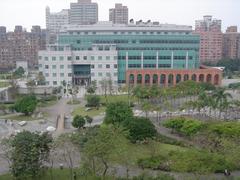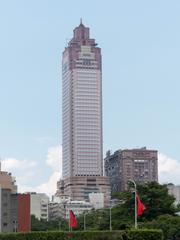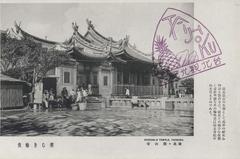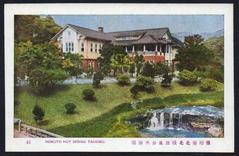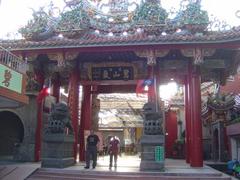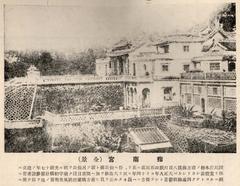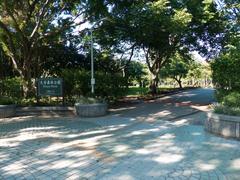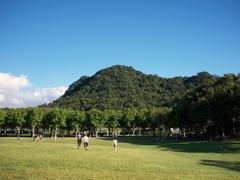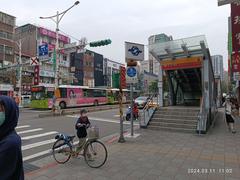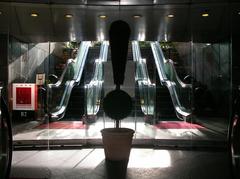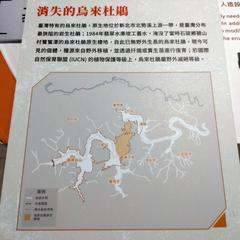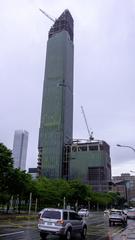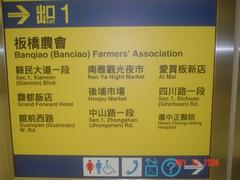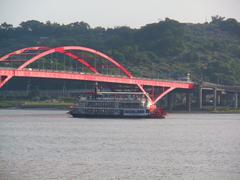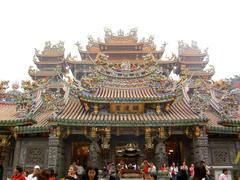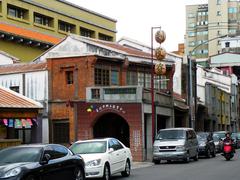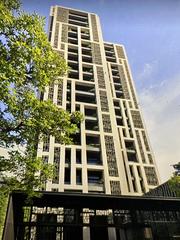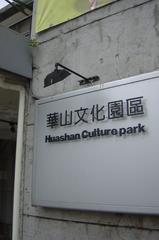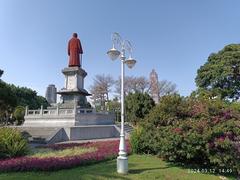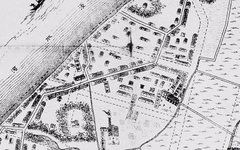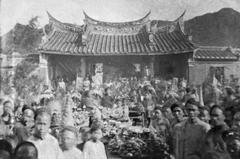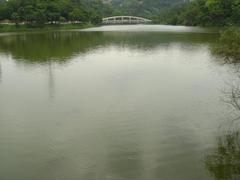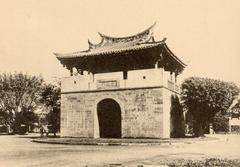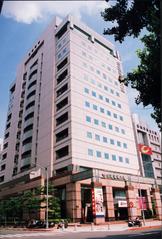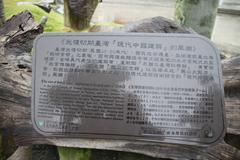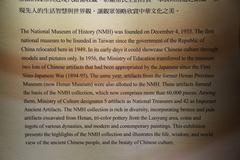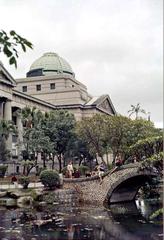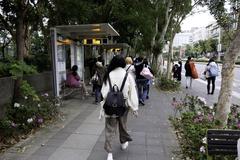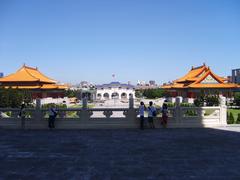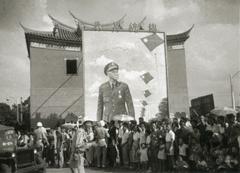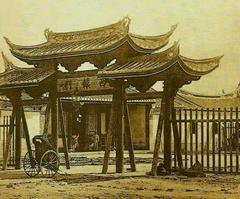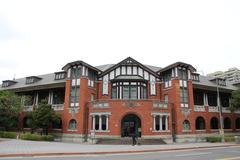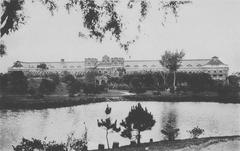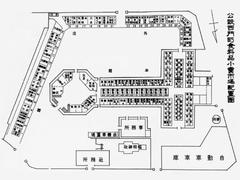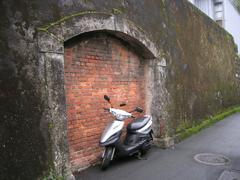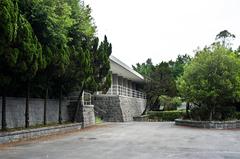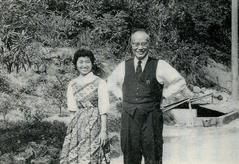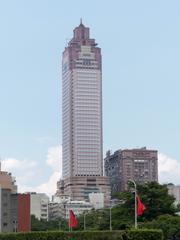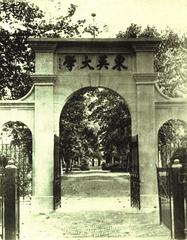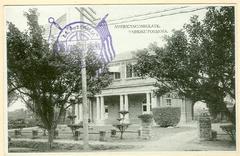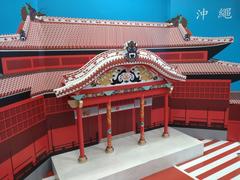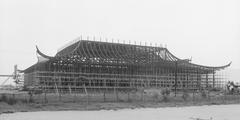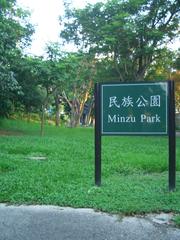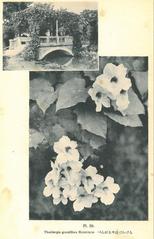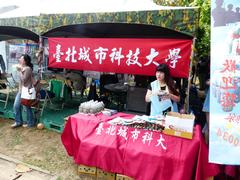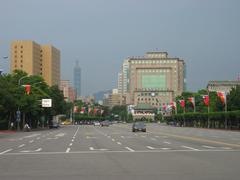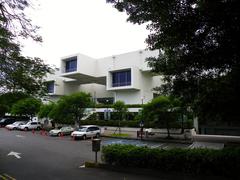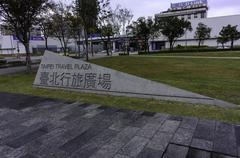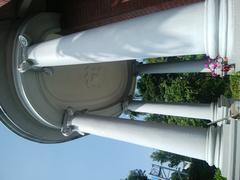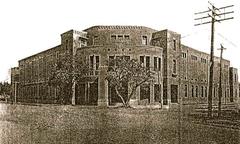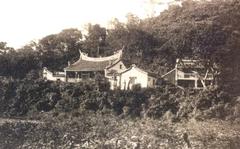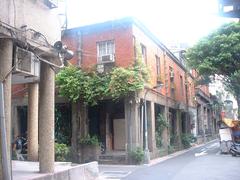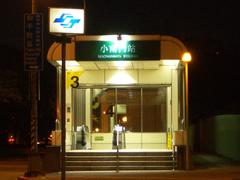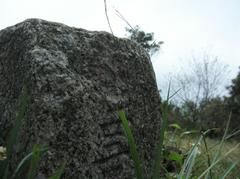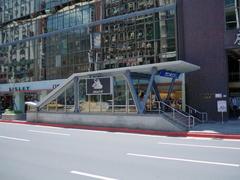
Visiting Huxue Suspension Bridge in Taipei, Taiwan Guide
Date: 19/07/2024
Introduction
Nestled over the picturesque Keelung River in Taipei, Taiwan, the Huxue Suspension Bridge (壺穴吊橋) offers visitors more than just a convenient crossing point. Constructed during the early 20th century Japanese colonial period, this historical structure stands as a testament to Taiwan’s rich cultural heritage and engineering prowess. The bridge not only connects remote communities but also serves as a cultural symbol, reflecting the resilience and ingenuity of the local population (source). Its strategic location and unique architectural style, incorporating both traditional and modern elements, make it a significant landmark worth exploring (source). This comprehensive guide delves into the history, architectural significance, visitor information, and cultural impact of the Huxue Suspension Bridge, providing essential tips and insights for travelers looking to experience this iconic site in Taipei.
Table of Contents
- Introduction
- History and Significance of Huxue Suspension Bridge
- Visitor Information
- Economic Impact
- Preservation Efforts
- Special Events and Photographic Spots
- Modern-Day Relevance
- Visitor Tips, Accessibility, and Nearby Taipei Attractions
- Conclusion
- FAQ
History and Significance of Huxue Suspension Bridge
Historical Background
The Huxue Suspension Bridge was constructed in the early 20th century during the Japanese colonial period (1895-1945). This era marked significant infrastructure development in Taiwan, including roads, railways, and bridges, aimed at modernizing the island and facilitating resource extraction and transportation. Initially built to connect remote areas and improve accessibility for local communities, the bridge’s strategic location over the Keelung River made it a vital link for transporting goods and people. The bridge’s design reflects the engineering techniques of the time, incorporating both traditional and modern elements with steel cables and wooden planks typical of suspension bridges from that period.
Architectural Significance
The architectural significance of the Huxue Suspension Bridge lies in its design and construction. Suspension bridges are known for their ability to span long distances with minimal support, making them ideal for crossing wide rivers and valleys. The Huxue Suspension Bridge is a prime example of this engineering marvel, with its main span measuring approximately 200 meters. The bridge features two main towers constructed from reinforced concrete, supporting the steel cables. These cables are anchored into massive concrete blocks on either side of the river, providing stability and strength. Wooden planks form the bridge deck, suspended from the cables, creating a flexible yet sturdy pathway for pedestrians and light vehicles.
Cultural Significance
The Huxue Suspension Bridge holds a special place in the hearts of the local community. It is not only a functional piece of infrastructure but also a cultural symbol. The bridge has been featured in numerous local legends and folklore, often associated with themes of love and perseverance. One popular story tells of a young couple who used the bridge as a meeting place, defying social norms and family expectations to be together. The bridge is also a popular spot for festivals and community events. The annual Lantern Festival sees the bridge adorned with colorful lanterns, creating a magical atmosphere that attracts both locals and tourists. This event highlights the bridge’s role as a gathering place and a symbol of community spirit.
Visitor Information
Visiting Hours
The Huxue Suspension Bridge is open to visitors year-round. Typical visiting hours are from 8:00 AM to 6:00 PM, but it is advisable to check local resources or the official website for any changes or special holiday hours.
Ticket Prices
There is no entrance fee to visit the Huxue Suspension Bridge. However, guided tours may be available for a nominal fee. These tours offer in-depth information about the bridge’s history and significance.
Guided Tours and Travel Tips
Guided tours are available and highly recommended for those interested in learning more about the bridge’s historical and cultural background. It’s advisable to wear comfortable walking shoes and bring water, as the area can be quite warm, especially during the summer months.
Nearby Attractions
While visiting the Huxue Suspension Bridge, consider exploring other nearby attractions such as the Keelung River trails, local temples, and traditional markets. These sites offer a deeper insight into the local culture and history.
Economic Impact
The construction and maintenance of the Huxue Suspension Bridge have had a significant economic impact on the surrounding area. Initially, the bridge facilitated trade and commerce by providing a reliable transportation route. Local farmers and merchants could easily transport their goods to market, boosting the local economy. In recent years, the bridge has become a popular tourist attraction, drawing visitors from around the world. This influx of tourists has spurred the development of local businesses, including restaurants, souvenir shops, and guided tour services. The economic benefits of tourism have helped to revitalize the area, providing jobs and opportunities for local residents.
Preservation Efforts
Given its historical and cultural significance, efforts have been made to preserve the Huxue Suspension Bridge. The bridge underwent a major restoration project in the early 2000s, aimed at repairing structural damage and ensuring its safety for future generations. This project was funded by both government and private sources, reflecting the broad support for preserving this iconic landmark. The restoration work included reinforcing the main towers, replacing worn-out wooden planks, and applying protective coatings to the steel cables. These efforts have helped to extend the bridge’s lifespan and maintain its historical integrity. Ongoing maintenance is also conducted regularly to address any wear and tear, ensuring that the bridge remains safe and functional.
Special Events and Photographic Spots
The annual Lantern Festival is a highlight event where the bridge is adorned with colorful lanterns. This creates a picturesque and festive atmosphere, perfect for photography. Other popular photographic spots include the bridge at sunrise or sunset, offering stunning views of the Keelung River and the surrounding landscape.
Modern-Day Relevance
Today, the Huxue Suspension Bridge continues to serve as a vital link for the local community while also attracting tourists from around the world. Its picturesque setting and historical significance make it a must-visit destination for anyone traveling to Taipei. The bridge offers stunning views of the Keelung River and the surrounding landscape, providing a unique perspective on the natural beauty of Taiwan. In addition to its aesthetic appeal, the bridge also serves as a reminder of Taiwan’s rich history and cultural heritage. It stands as a testament to the ingenuity and resilience of the people who built it and the generations who have maintained it. For visitors, crossing the Huxue Suspension Bridge is not just a physical journey but also a journey through time, offering a glimpse into the past and a deeper understanding of Taiwan’s cultural identity.
Visitor Tips, Accessibility, and Nearby Taipei Attractions
Getting There
壺穴吊橋 (Huxue Suspension Bridge) is located in the scenic Neihu District in Taipei, Taiwan. The bridge is accessible by various modes of transportation:
- Public Transportation: The most convenient way to reach the bridge is by taking the Taipei Metro (MRT) to the Neihu Station on the Brown Line. From there, you can take a local bus or a taxi to the trailhead leading to the bridge.
- Driving: If you prefer to drive, there are parking facilities available near the trailhead. However, parking spaces can be limited, especially on weekends and holidays, so it is advisable to arrive early.
Best Time to Visit
- Seasonal Considerations: The best time to visit Huxue Suspension Bridge is during the spring (March to May) and autumn (September to November) when the weather is mild and the scenery is at its most beautiful. Summer can be hot and humid, while winter may bring occasional rain.
- Time of Day: Early mornings and late afternoons are ideal for visiting to avoid the midday heat and crowds. The lighting during these times also makes for excellent photography opportunities.
What to Wear and Bring
- Clothing: Wear comfortable, weather-appropriate clothing. Lightweight, breathable fabrics are recommended for the warmer months, while layers are advisable during cooler periods.
- Footwear: Sturdy, comfortable walking shoes or hiking boots are essential as the trail to the bridge can be uneven and slippery, especially after rain.
- Essentials: Bring a hat, sunglasses, and sunscreen to protect against the sun. A reusable water bottle is also recommended to stay hydrated. Insect repellent can be useful, especially in the warmer months.
Trail Information
- Trail Difficulty: The trail leading to Huxue Suspension Bridge is moderately challenging, with some steep sections and uneven terrain. It is suitable for most visitors with a reasonable level of fitness.
- Trail Length: The hike to the bridge is approximately 2 kilometers (1.2 miles) one way, taking about 45 minutes to an hour to complete.
- Trail Markings: The trail is well-marked with signs in both Chinese and English, making it easy to follow.
Safety Tips
- Weather Conditions: Check the weather forecast before your visit. Avoid hiking during heavy rain or thunderstorms as the trail can become slippery and dangerous.
- Stay on the Path: Stick to the designated trail to avoid getting lost or damaging the natural environment.
- Emergency Contacts: Carry a mobile phone with emergency contact numbers saved. In case of an emergency, dial 119 for immediate assistance.
Accessibility
- Physical Accessibility: The trail to Huxue Suspension Bridge is not wheelchair accessible due to its natural terrain and steep sections. Visitors with mobility issues may find it challenging to navigate.
- Facilities: There are basic facilities such as restrooms and seating areas near the trailhead. However, facilities along the trail and at the bridge itself are limited.
- Guided Tours: For those who prefer a guided experience, several local tour operators offer guided hikes to the bridge, providing additional insights into the area’s history and natural features.
Photography Tips
- Best Angles: The bridge offers stunning views of the surrounding forest and river below. For the best photos, try capturing the bridge from different angles, including from the trail leading up to it and from the middle of the bridge itself.
- Lighting: Early morning and late afternoon provide the best natural lighting for photography. Avoid midday when the sun is directly overhead, causing harsh shadows.
- Equipment: A good camera with a wide-angle lens is ideal for capturing the expansive views. A tripod can be useful for steady shots, especially in lower light conditions.
Nearby Attractions
- Dahu Park: Located nearby, Dahu Park is a beautiful spot to relax and enjoy the scenery. The park features a large lake, walking trails, and traditional Chinese pavilions.
- Bishan Temple: A short drive from the bridge, Bishan Temple offers panoramic views of Taipei and the surrounding mountains. The temple is a popular spot for both tourists and locals.
- Neihu Flower Market: For those interested in local flora, the Neihu Flower Market is a great place to explore. The market is open on weekends and offers a wide variety of plants and flowers.
Local Etiquette
- Respect Nature: Follow the “Leave No Trace” principles by taking all your trash with you and not disturbing the wildlife.
- Quiet Enjoyment: Keep noise levels down to maintain the tranquility of the area and respect other visitors.
- Cultural Sensitivity: Be mindful of local customs and traditions. Taiwan is a predominantly Buddhist and Taoist country, and showing respect for these beliefs is appreciated.
Useful Links
Conclusion
The Huxue Suspension Bridge is more than just a piece of infrastructure; it embodies Taiwan’s history, culture, and community spirit. From its construction during the Japanese colonial era to its modern-day role as a tourist attraction, the bridge has continuously served as a vital link for both locals and visitors. Its picturesque setting over the Keelung River, combined with its historical and cultural significance, makes it a must-visit destination in Taipei (source). Preservation efforts and local community support ensure that the bridge remains a safe and enduring landmark for future generations. Whether you’re interested in its architectural marvel, cultural stories, or simply the breathtaking views, the Huxue Suspension Bridge offers a unique and memorable experience for all who visit (source).
FAQ
Q - What are the visiting hours for Huxue Suspension Bridge?
A - The bridge is open from 8:00 AM to 6:00 PM year-round. Check the official website for any updates or changes.
Q - How much are tickets for Huxue Suspension Bridge?
A - There is no entrance fee, but guided tours may have a nominal fee.
Q - Are there guided tours available?
A - Yes, guided tours are available and offer detailed insights into the bridge’s history and cultural significance.
Q - What are some nearby attractions?
A - Nearby attractions include the Keelung River trails, local temples, and traditional markets.
Q - Are there any special events held at the bridge?
A - The annual Lantern Festival is a major event where the bridge is decorated with colorful lanterns, creating a festive atmosphere.
References
- Visiting Huxue Suspension Bridge in Taipei - History, Tickets, and Travel Tips, 2024, Author (source)
- Huxue Suspension Bridge - Visitor Tips, Accessibility, and Nearby Taipei Attractions, 2024, Author (source)
- Visiting 壺穴吊橋 - Cultural Etiquette and Local Amenities in Taipei, Taiwan, 2024, Author (source)




